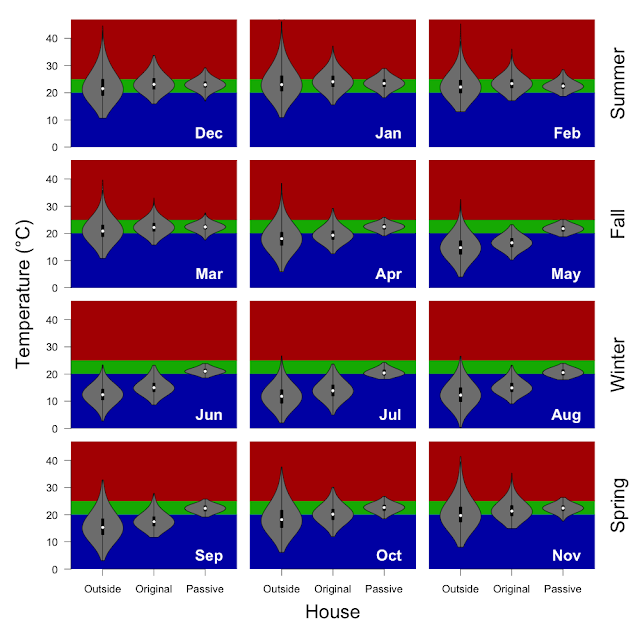2024 July
July was as cold as June (median temperature 11 °C) but not quite as gloomy (9kWh/day of solar production). Outside temperatures ranged from 2 to 22 °C, while inside we were a comfortable 18 to 24 °C. The HRV was in heating season the entire month, and the split system was set to heat during peak solar production (not that we had a whole lot of sun in June) and set to heat to 18 °C overnight for the entire month.
Temperature from inside and outside the house as the percentage of hours in 0.5 °C bins. I've scaled the temperature in hope that I will be able to use the temperature range for all months.
Methods: I have taken the 5 minutely data from the wirelessTag sensors and calculated the median temperature for each hour and determined the proportion of hours falling inside of the 20 - 25 °C target temperature (using the R functions 'aggregate' and 'hist'). Inside includes data from the wirelessTag sensors spread across nearly every room of the house. Outside is the data from the wirelessTag sensors outside near the cubby house and HRV intake. The water wall and door data are not included.
Energy production and consumption: 1. total daily consumption daily energy production, 2. daily net energy production, and 3. energy independence (which is the percentage of our daily consumption that is met directly by our solar panels).
Methods: Data are taken from the Enphase Enlighten system. This reports solar generation and electricity consumption as well as import from and export to the grid in 15 minute intervals. The R function 'aggregate' is used to create daily values and the function 'vioplot' to create the plots. The plots show individual days as points, with the vertical black bar covering the middle 50% of the data, the big white circle is the middle of the data (median), the whiskers extend to the farthest points from the median that are not more than 1.5 times the interquartile range, and the grey 'violin' shows the distribution of the datapoints where the narrow portions indicates few datapoints and a wide portion indicates more commonly occurrence... much like a histogram.




